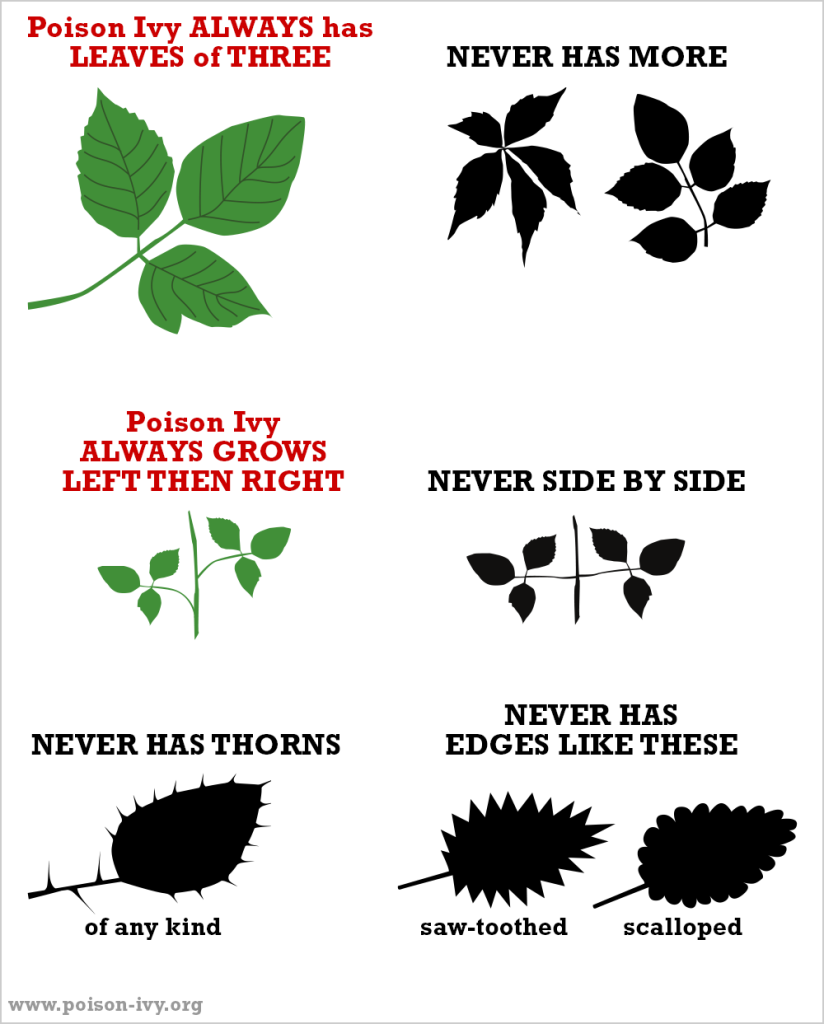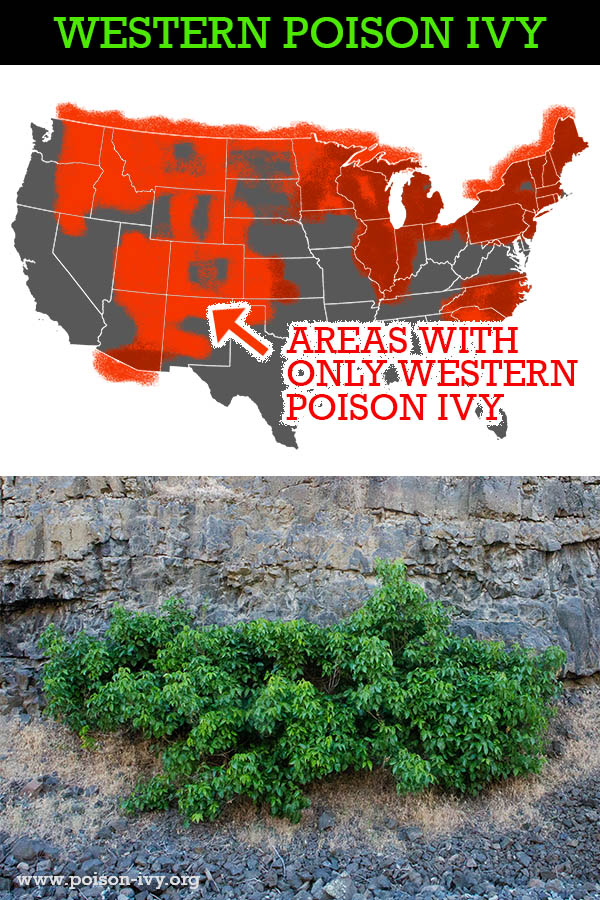This is about western poison ivy, also known as Toxicodendron rydbergii or Rydbergs poison ivy.
This is a close cousin of Eastern poison ivy and shares some features, such as leaves of three and small berries.
But whereas Eastern grows as a climbing vine, ground vine and as a shrub, Rydbergs grows almost always as a shrub.
It can grow in very dry areas, but will also grow near water as shown in the photos below.
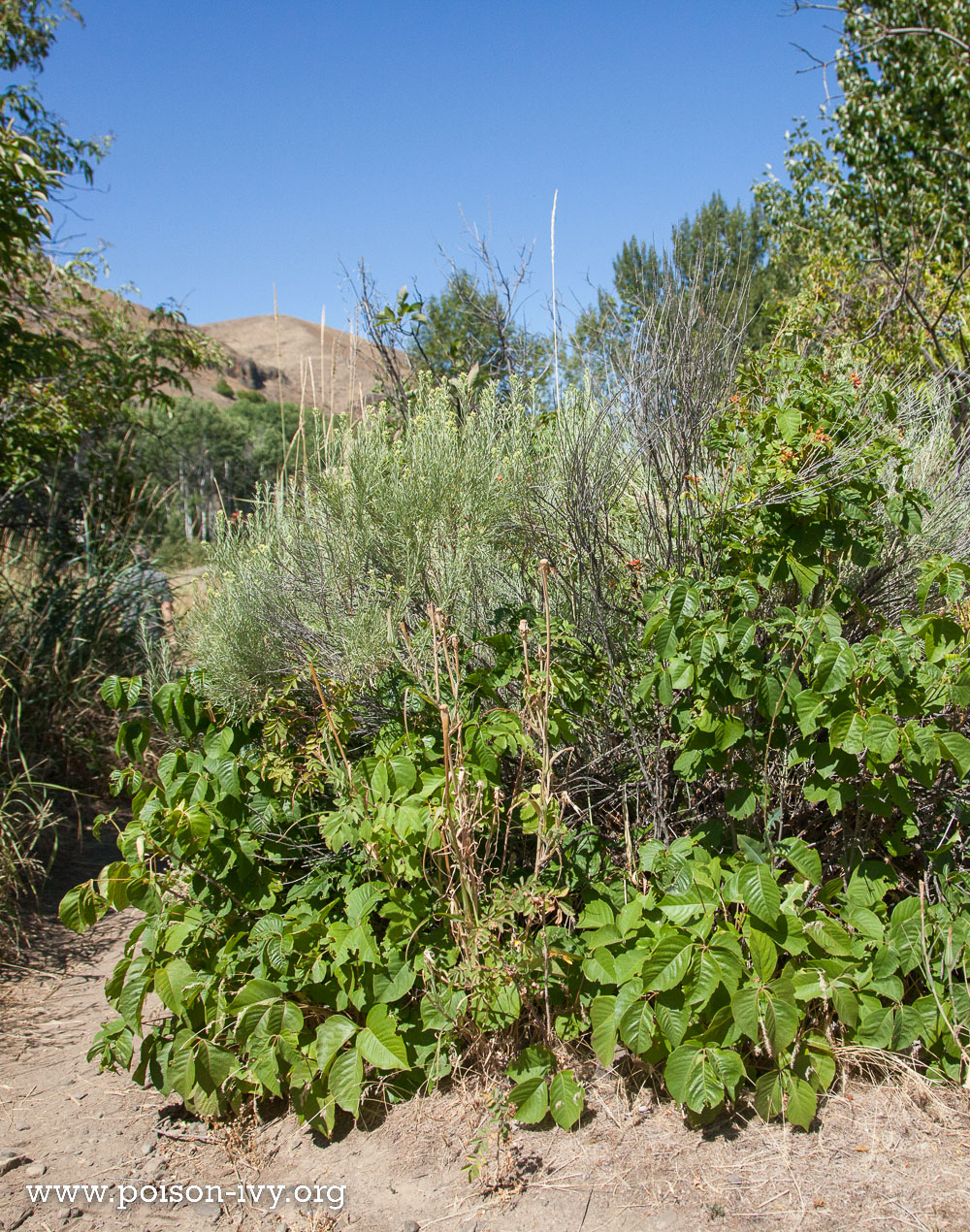
Western Poison Ivy Growing Under Other Plants
In the arid west both Western poison ivy and Pacific poison oak will sometimes grow at the base of other plants and trees in order to stay out of the direct sun.
There was a stream not far from this location, but as this was August, the stream was nearly dry.
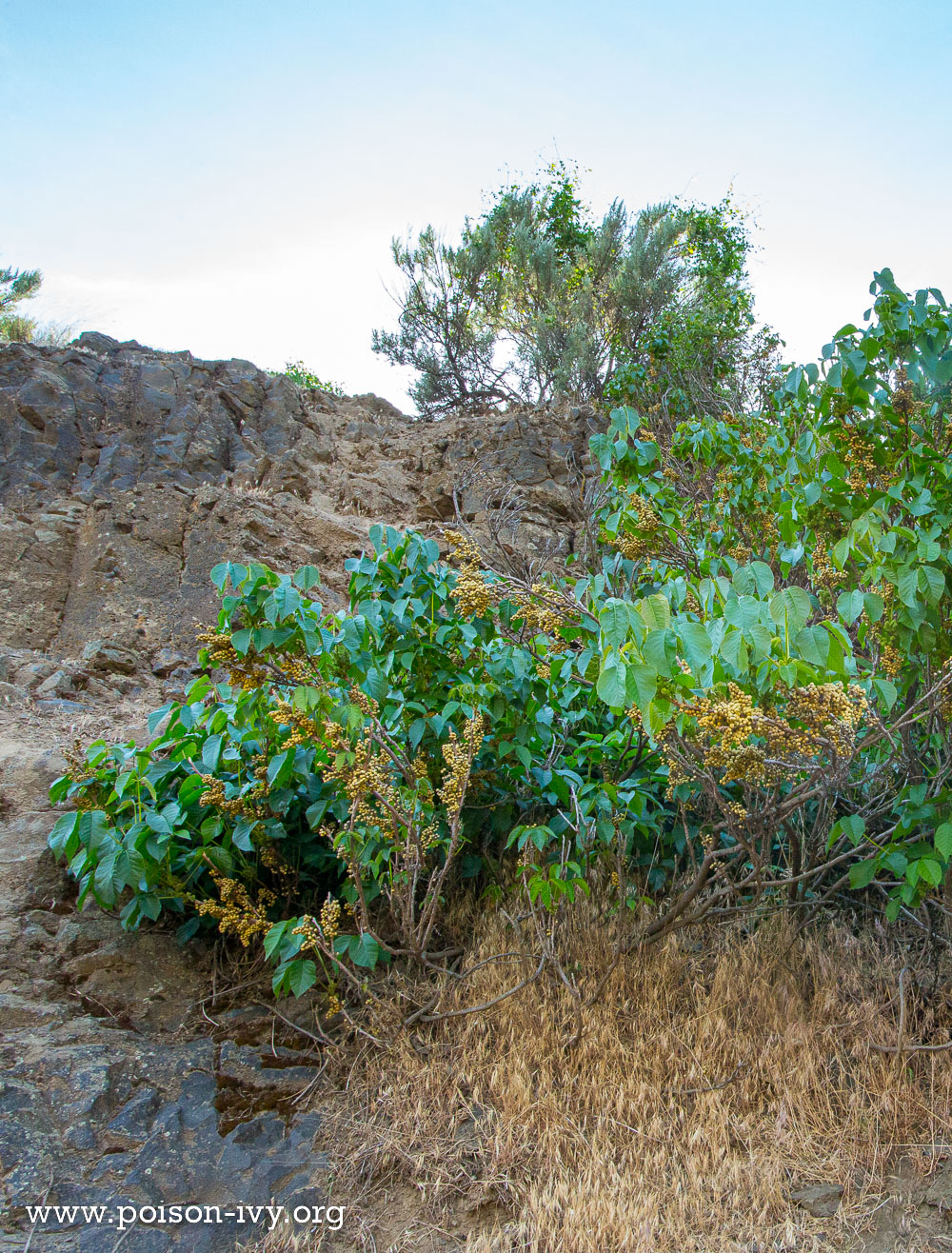
Western Poison Ivy With Berries
In this very dry landscape you can see western poison ivy with very dense bunches of dry berries on it.
The berries will be taken up by birds, maybe by rodents, and spread around.
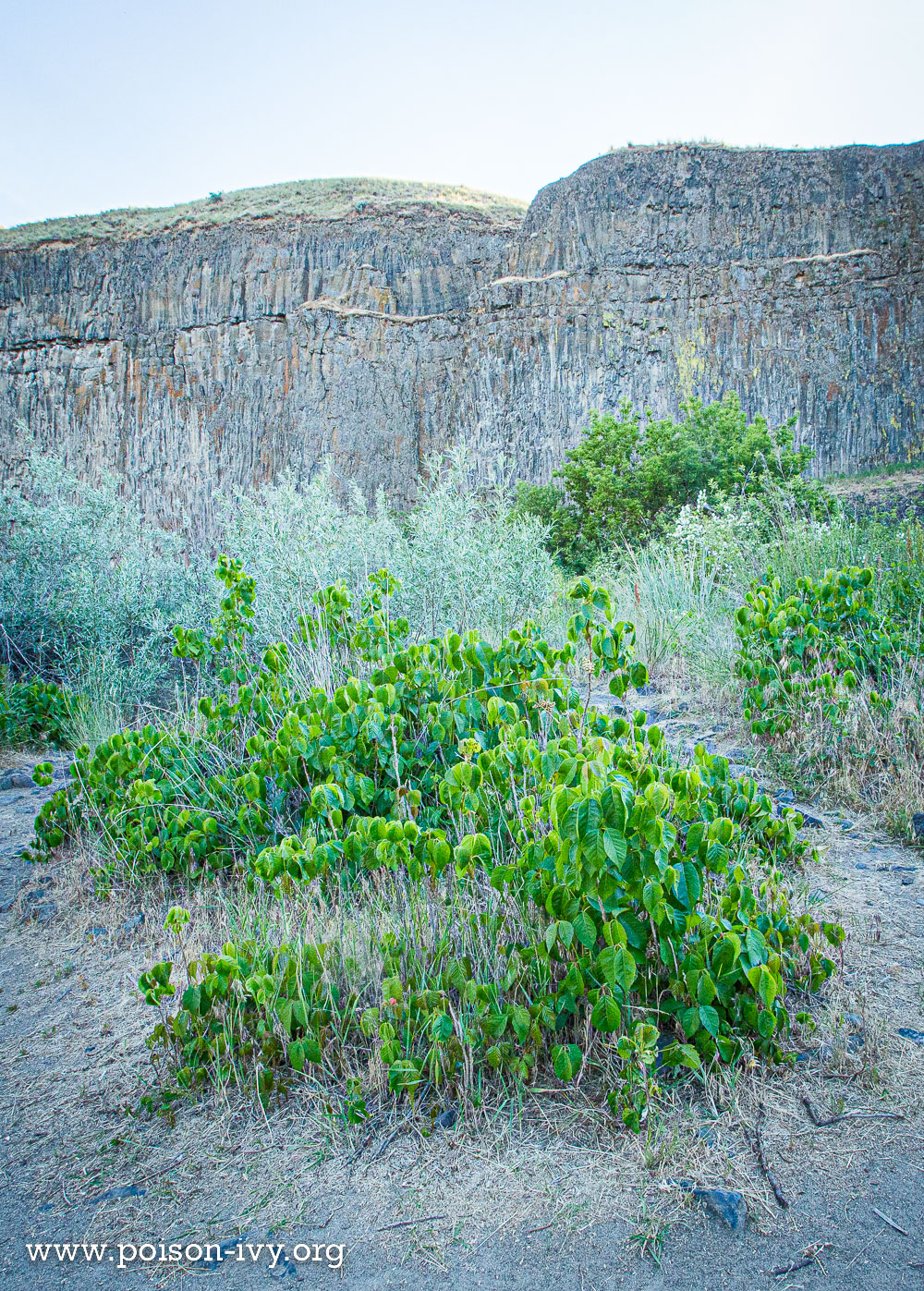
Western Poison Ivy In a Canyon
Another example of Western poison ivy trying to grow in an arid canyon. There was a river but it was about 100 feet away, not close enough to supply water.
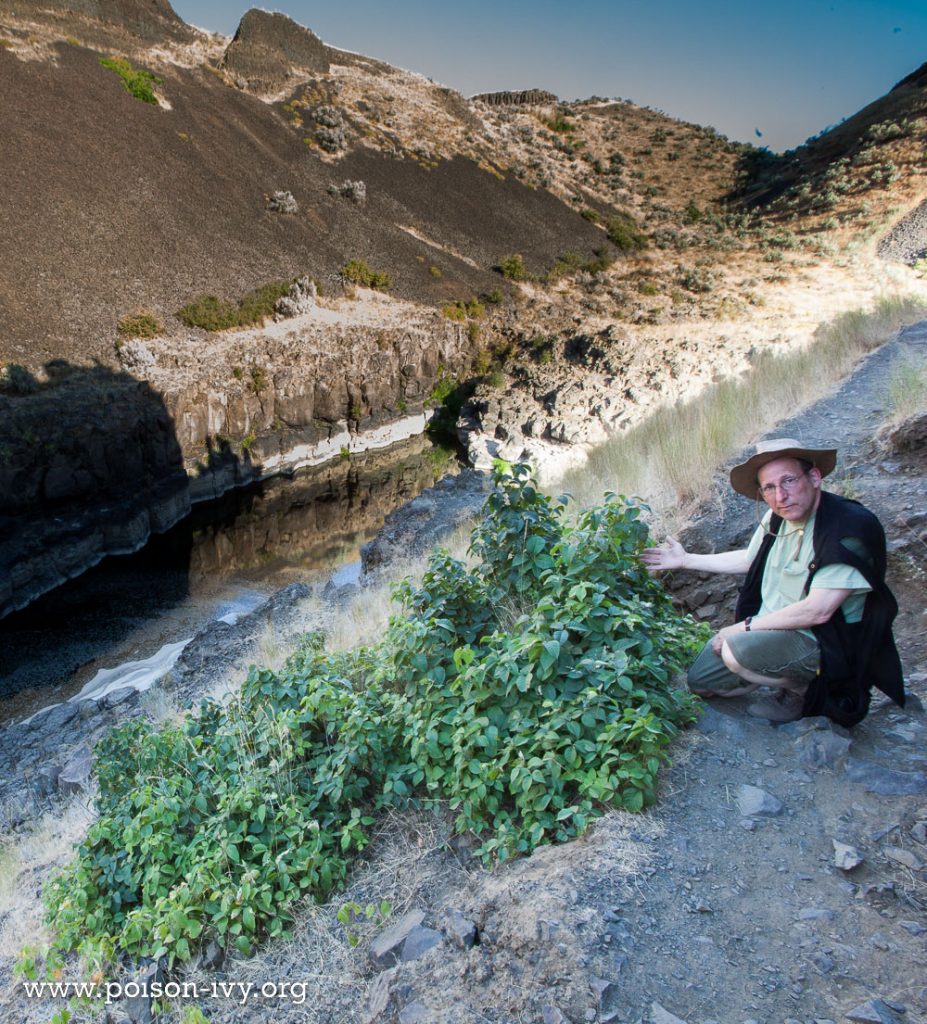
Western Poison Ivy Near Palouse Falls
The very dry riverbed of the Palouse River supports bunches of poison ivy, but notice how there is lots of open, rocky space all around without a single plant.
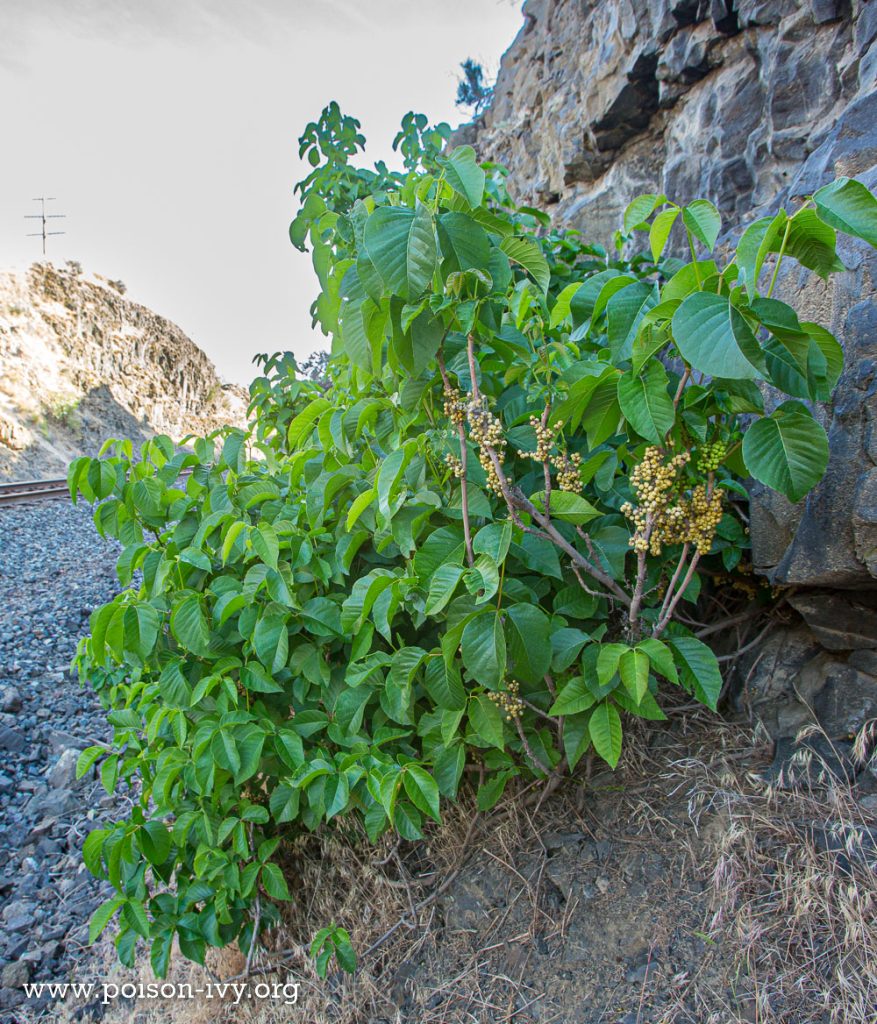
Western Poison Ivy Near Railroad Bed
Here a Western poison ivy plant huddles against the rocks on one side of train tracks.
It’s location against the stone wall gives it some shade during parts of the day.
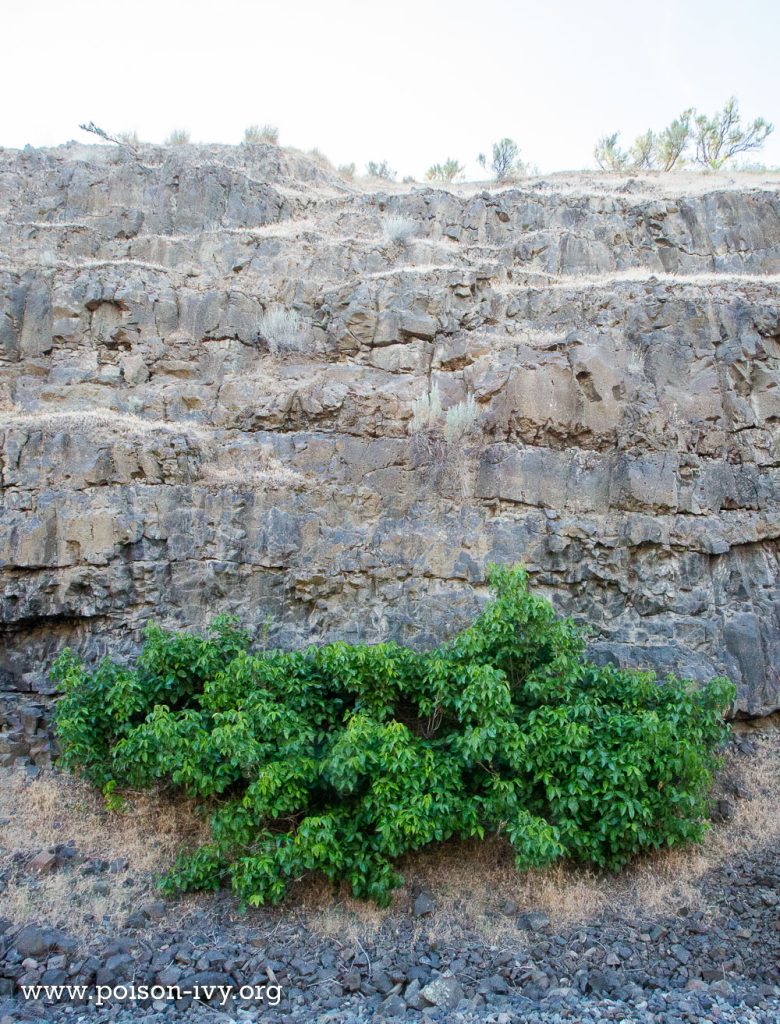
Western Poison Ivy Near Railroad Bed
This large and dense Western poison ivy shrub is growing up against the rock wall of a railroad bed. The shade of the rock wall and the depth below the normal ground both give the plant some help staying cooler and getting some moisture.
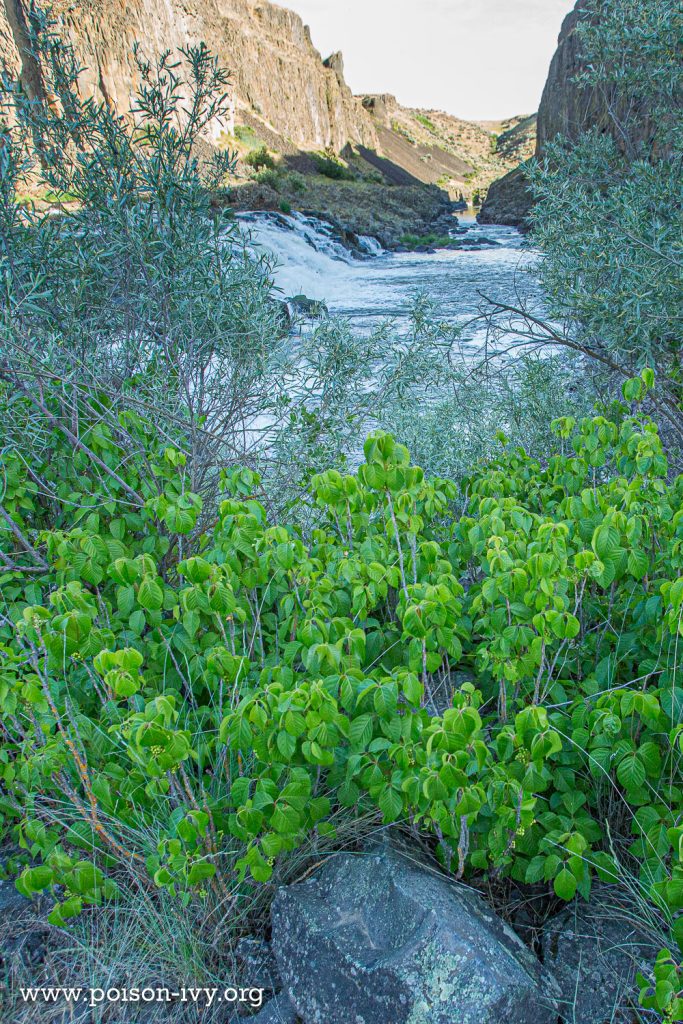
Western Poison Ivy Near Palouse River
The area around a riverbed will keep plants alive in very dry areas. Here Western poison ivy shares a riverside spot with other small trees and shrubs.
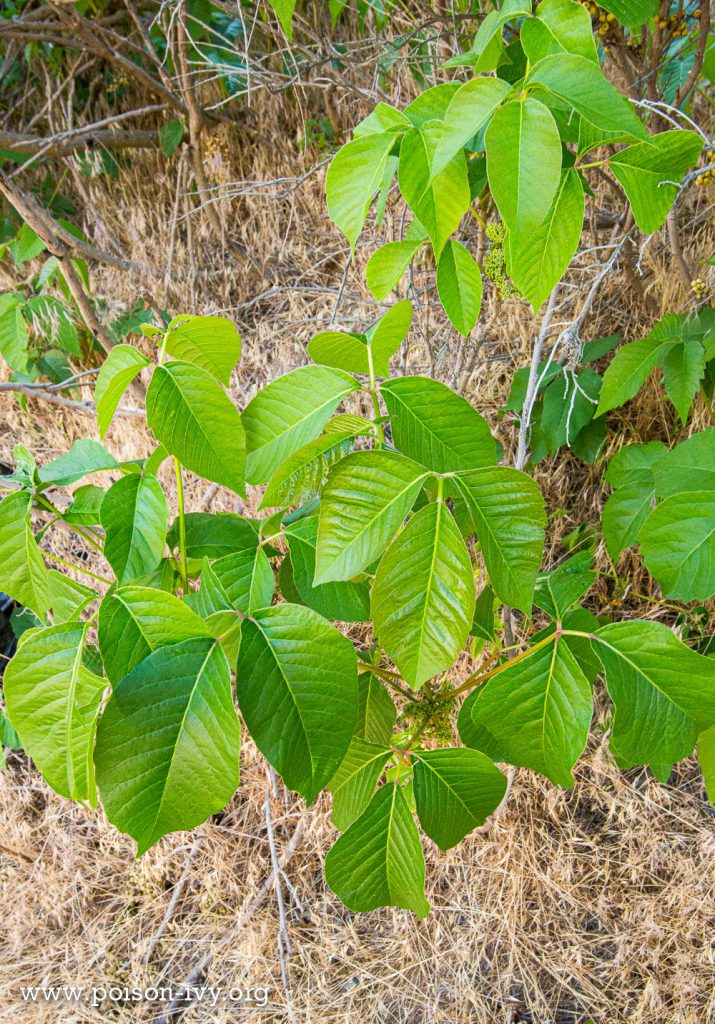
Western Poison Ivy Looks Just Like Eastern
This low plant has leaves of three, just like Eastern poison ivy. This sub-species does grow in the east as well as the west, but in the east will become almost impossible to tell from Eastern poison ivy.
But in places like Washington State – all of the poison ivy is the non-climbing type.
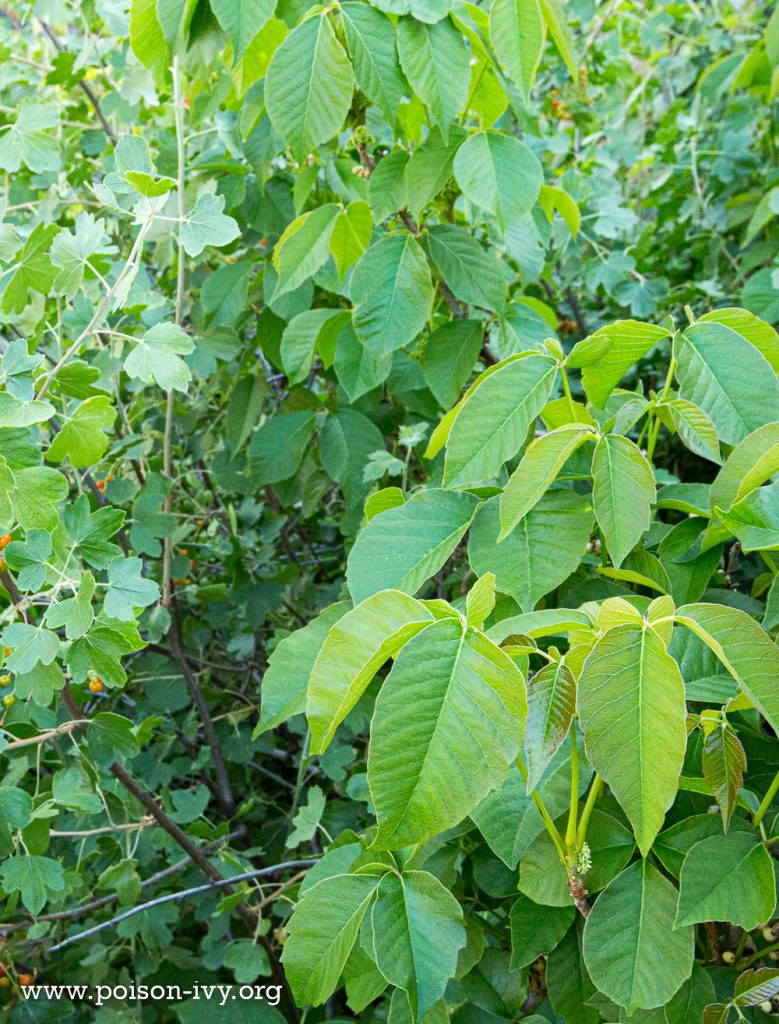
Western Poison Ivy Among Other Plants
Here we see Western poison ivy growing up against other shrubs and trees.
It seems to benefit from the shade of other plants when growing in very dry conditions.
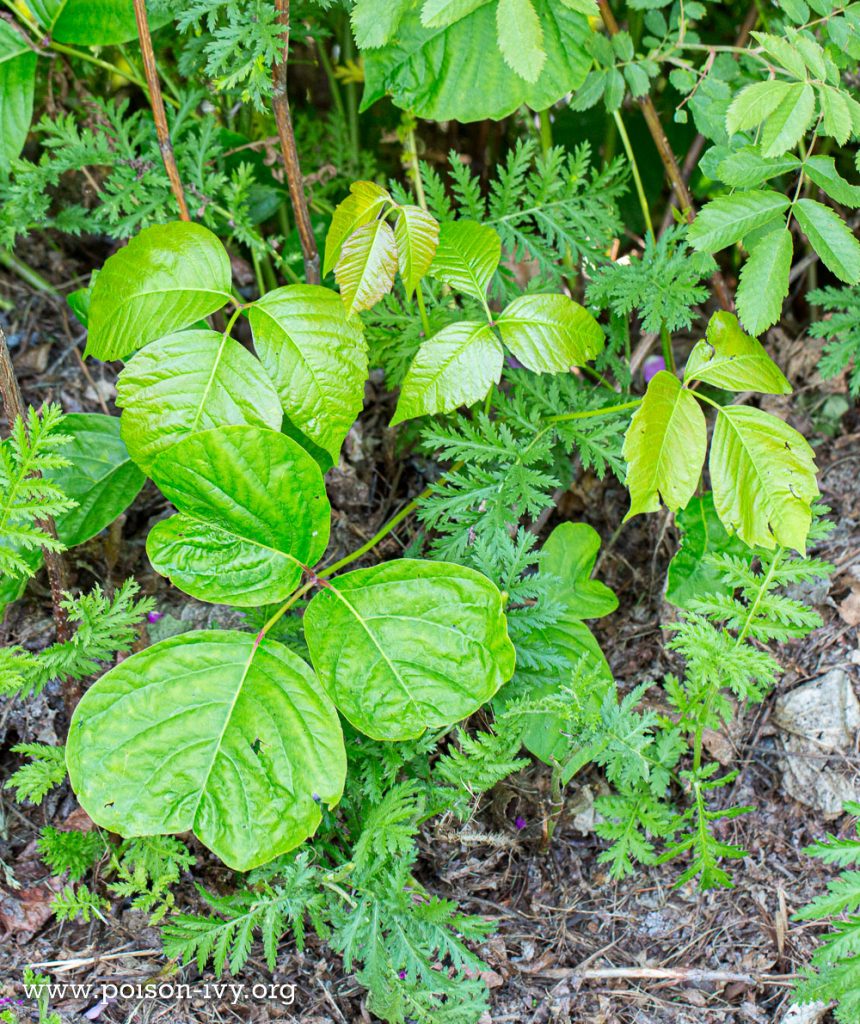
Western Poison Ivy Leaf Variations
Here we see that Western poison ivy leaves can have very different leaf shapes, from pointed to rounded.
Just like Eastern, some leaves will have notches, some not.
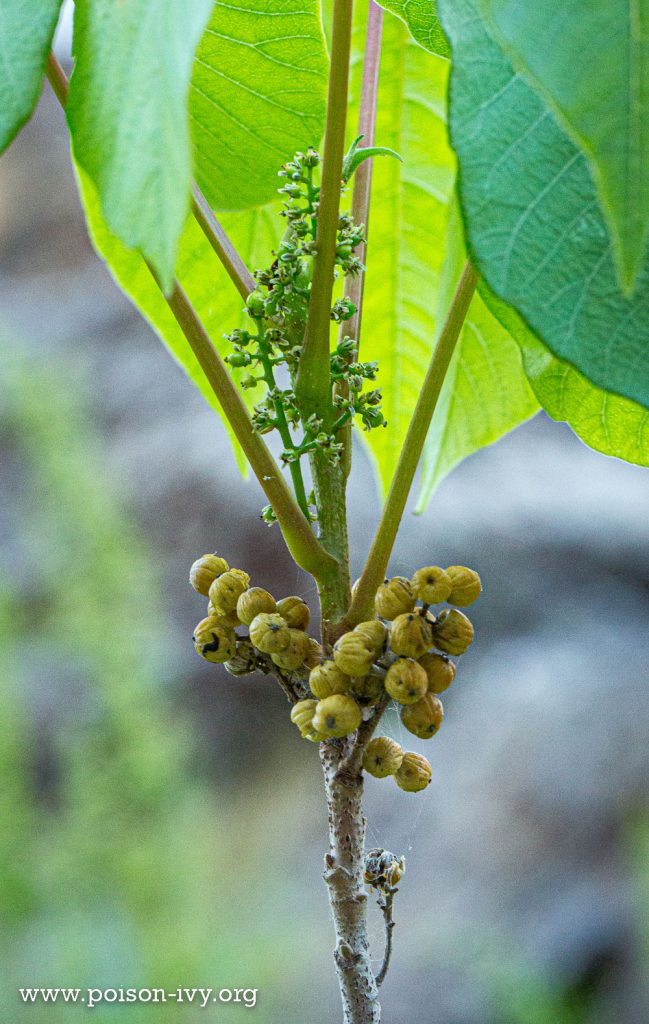
Western Poison Ivy Flowers and Berries
The plant has both active flowers and mature berries. The long growing season in the west may favor this double-cropping.
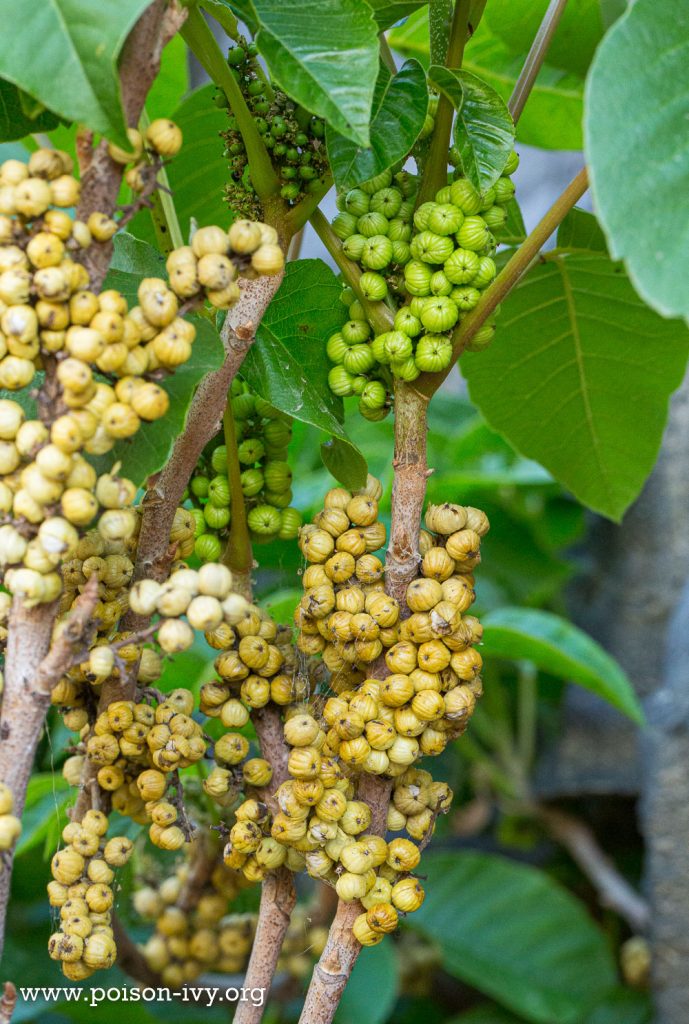
Western Poison Ivy Berries In Various Stages
This plant has berries just forming from flowers at the top center of the image, then green younger berries, then the tan ripe berries.
Notice the distinct lines that make the berries look like tiny pumpkins.
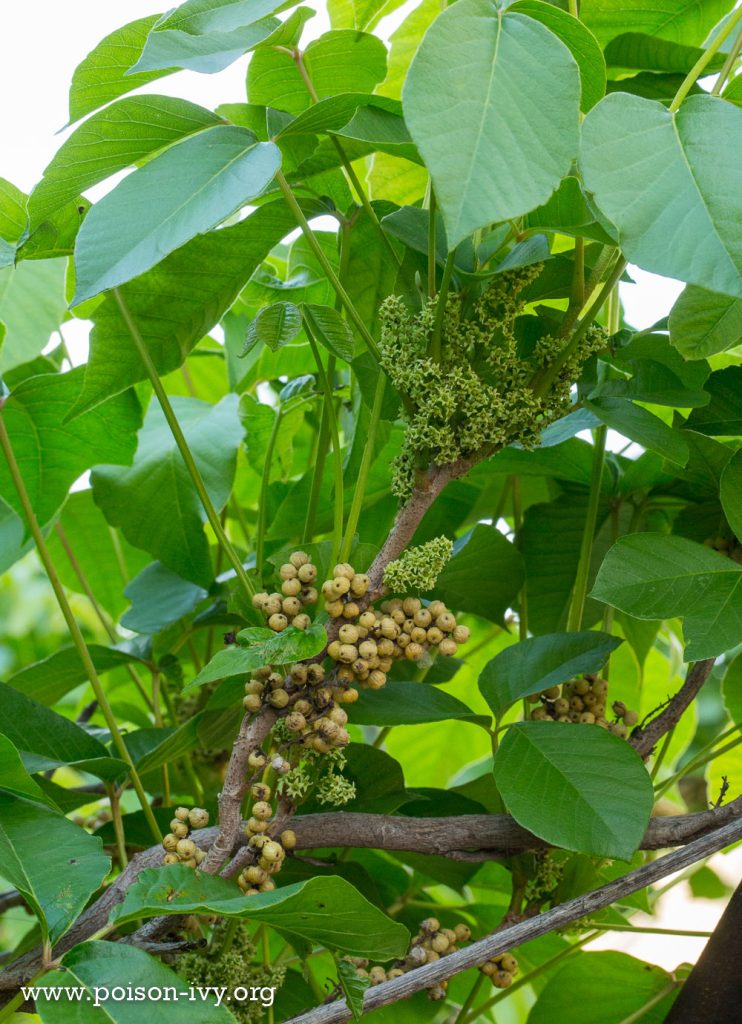
More Western Poison Ivy Berries In Various Stages
This plant has bunches of green flowers about to become berries plus lots of ready-to-go tan berries below, all in the shade from the leaves.
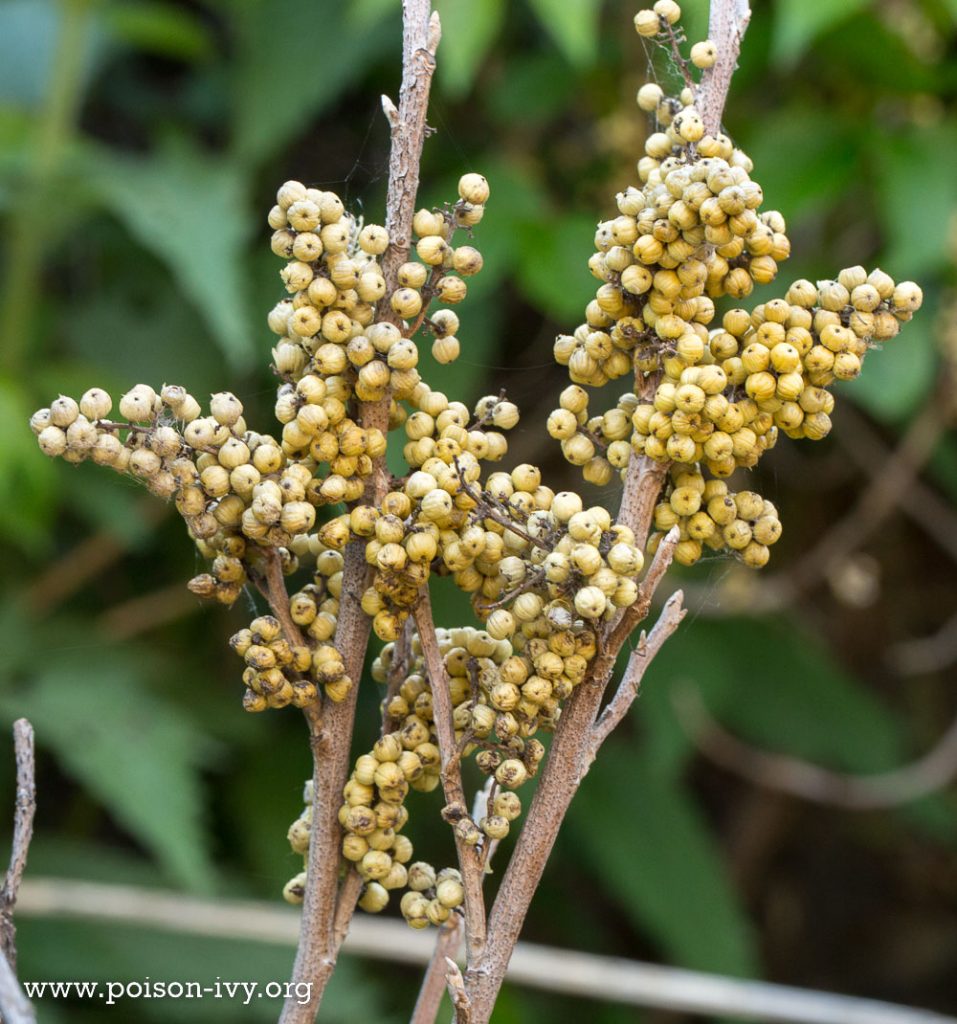
Bumper Crop of Western Poison Ivy Berries
Like many plants, Western poison ivy is determined to put out as many berries as it can to keep the species going. This is a particularly dense set of berries on two parallel vertical stalks.
